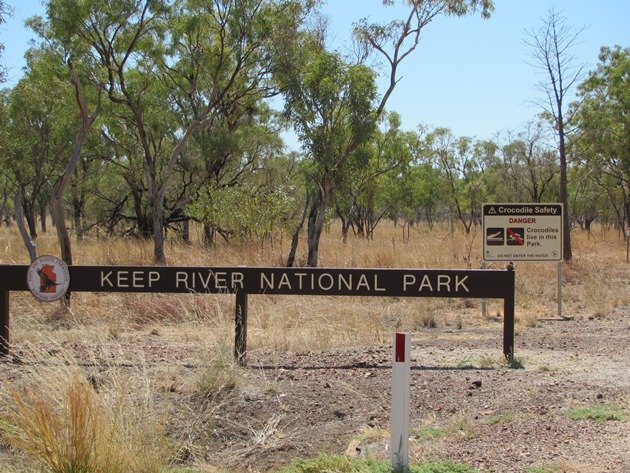
We have just returned from a bush camping trip to the north of Broome that took us over the border. There are very few towns between Broome and the Northern Territory and the distances can be overwhelming for those unfamiliar with a large open country. In a vehicle you have several hours between towns and fuel stations, so when we came across a Japanese cyclist in the shade of a tree in the middle of nowhere we stopped. We always have our eyes peeled to the surrounding area as we drive along because many birds inhabit the bush and of course we were concerned for the young man. Thankfully he was well equipped and had ample water, but gratefully accepted fresh oranges and we hope we made the rest of his day somewhat easier. It can be a harsh cruel country out there and although the road is generally good it must also seem to go forever on a bicycle.
Keep River National Park sits on the border of Western Australia and the Northern Territory and it is entered from just over the border. The roads in the park are gravel and somewhat corrugated, but you do not need a four-wheel drive if you take it carefully. It is well-known for its geological formations, aboriginal cave drawings and the White-quilled Rock-Pigeons. There is an information shelter as you enter the park and then an information centre close to Cockatoo Lagoon a short distance in. Drinking water is available at two locations within the park and there is ample shade at the two camping areas. Neither of the camping areas were busy and it is very reasonably priced with overnight rates of $3.30 per person per night and discounts for families.
At Cockatoo Lagoon you can take a short walk along the edge of the billabong and there are a variety of birds, but not necessarily large numbers of any particular species. It was a particularly good place to sit and watch finches come in to drink even in the height of the day, though they did prefer the far bank and I was unable to get any decent photographs. We observed Zebra Finch, Long-tailed Finch, Masked Finch, Double-barred Finch, Star Finch and the rare Gouldian Finch….an uncommon red-headed male no less! We saw Crimson Finches in other areas of the park, so all up it is a great place to observe any of the finch species.
Cockatoo Lagoon
Magpie Goose and Straw-necked Ibis
Beyond the edges of the billabong you need to scan the trees for other birds and there were at least two Nankeen Night Herons with a Little Pied Cormorant.
Nankeen Night Heron and Little Pied Cormorant
Further along there were several Red-tailed Black Cockatoos roosting in the heat of the day and then one tree was rather noisy with the raucous calls of the Galahs and the Red-collared Lorikeets.
Red-tailed Black Cockatoos
Galah
Red-collared Lorikeet
We chose to drive to the far end of the park and camp in amongst the rocky outcrops which offer a spectacular landscape especially at sunrise and sunset. We hiked the Jarnem walk as a complete loop in both the late afternoon and then again in the early morning to appreciate the different lighting and the opportunity to see the numerous White-quilled Rock-Pigeons. It really is a beautiful pristine area and you go through a variety of landscapes during the three hour walk. At the start of the walk there were several Blue-winged Kookaburras that appeared to be conspiring as to how early they would awake us all the next day! They were doing a practise run in the late evening.
Blue-winged Kookaburra
As we continued through the pandanus we saw a Grey Butcherbird rather than the Pied Butcherbird that is a regular visitor to our garden at home in Broome. The flowering native trees were attracting several birds to their nectar.
Grey Butcherbird
Olive-backed Oriole in a native flowering tree
We followed the trail along the edge of the amazing geological formations with very tall Livingstonia Palms growing along their bases. It truly is spectacular with all of the different colours and light falling on the formations.
Livingstonia Palms in Keep River National Park
We heard and observed several White-quilled Rock-Pigeons at the top of the escarpment in both the late afternoon and evening, but they are extremely well camouflaged until they fly with an almost mechanical sound coming from their wings. We had also encountered this species last year in Hidden Valley National Park in Kununurra.
White-quilled Rock Pigeon
The Jinumum walk is somewhat shorter and is a return walk that follows the bed of the Keep River to a site once used by the Miriwoong people as a Wet Season shelter. There are numerous cave drawings in the caves of varying size and clarity. We were intrigued by a Great Bowerbird that had one of the busiest bowers that we have seen in a long time. It obviously had a bit of a bone fetish and had collected bones from both bird and animal.
Aboriginal cave drawings
Great Bowerbird bower that particularly likes bones!
The one other walk is called Gurrandalng and takes you on a short loop weaving through the sandstone rock formations offering spectacular views. There is no water on this trail so the birdlife is somewhat restricted by this.
We observed 75 species of birds during our visit to Keep River National Park in August and when we checked our list from our last visit in November 1999 the birds were similar with the exception of some migrants which had returned to the area by then. It is a nice quiet park which has plenty to offer, though the weather can be rather oppressive later in the year.


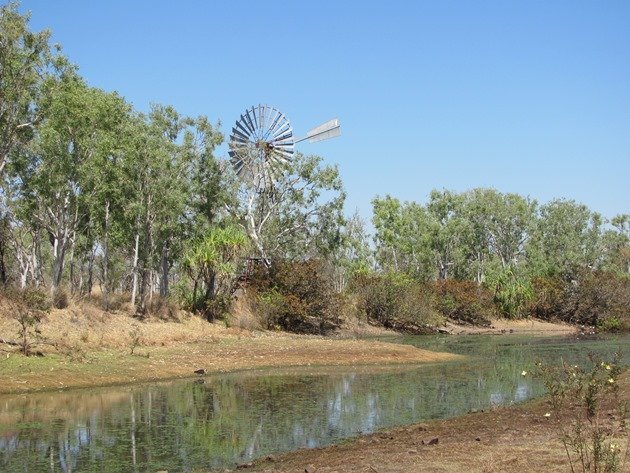
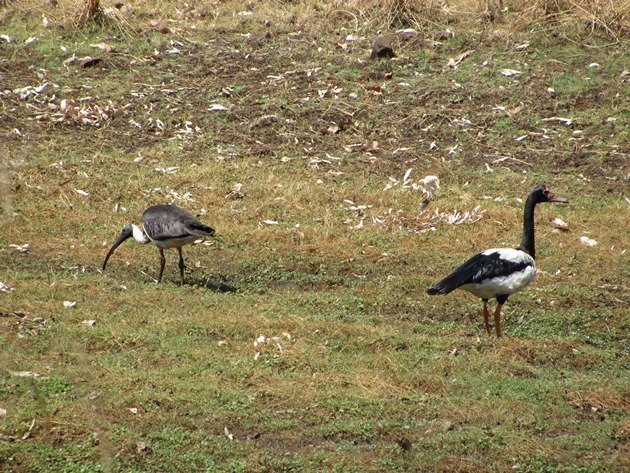
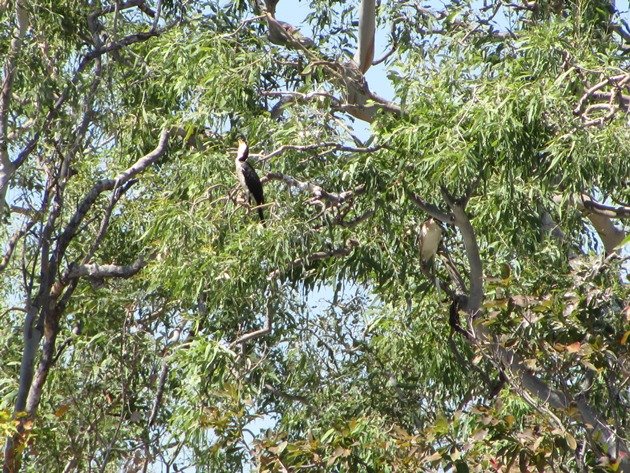
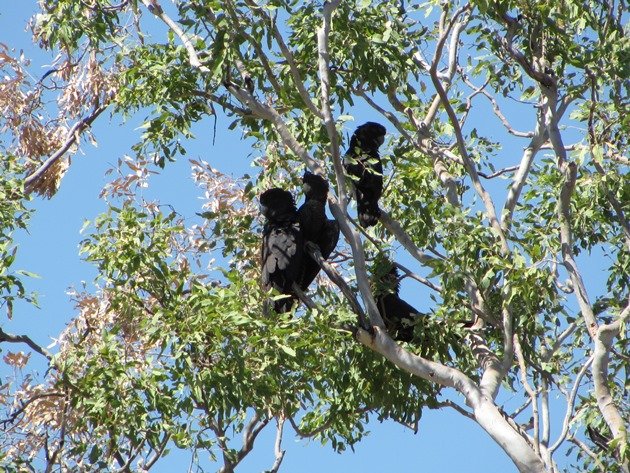
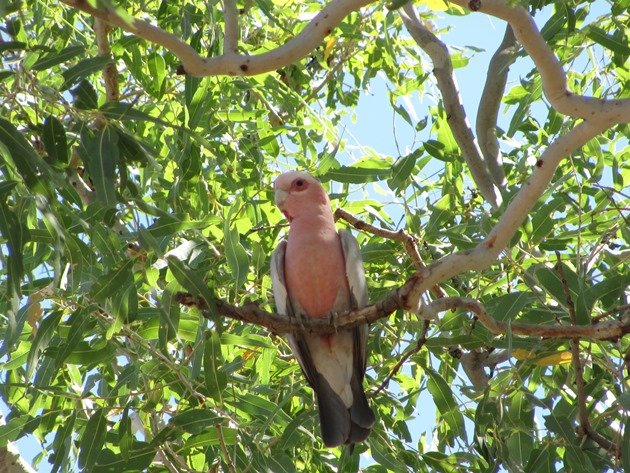
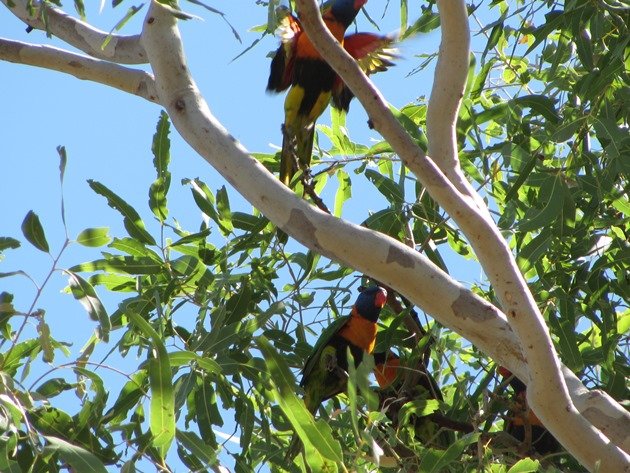
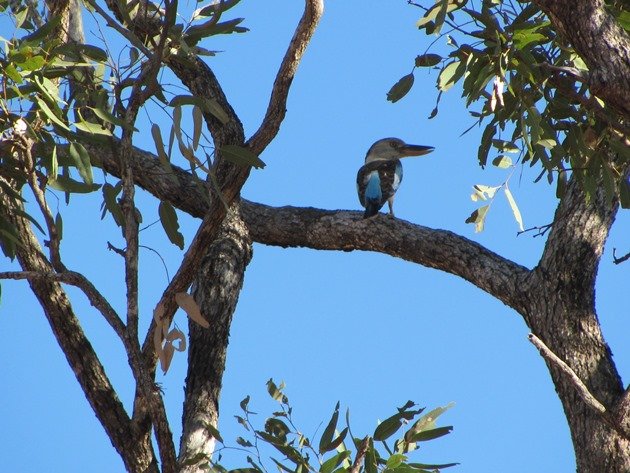

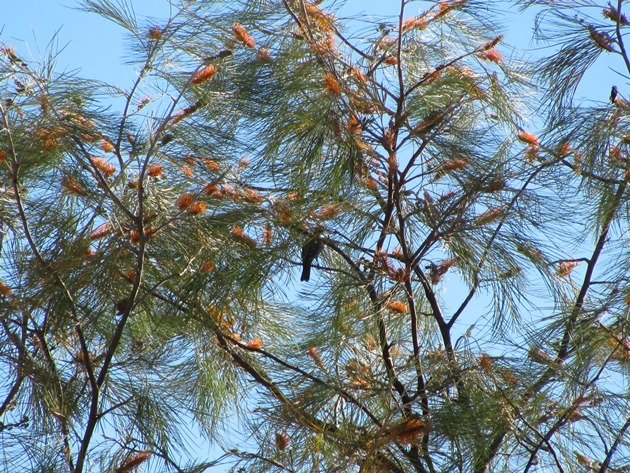
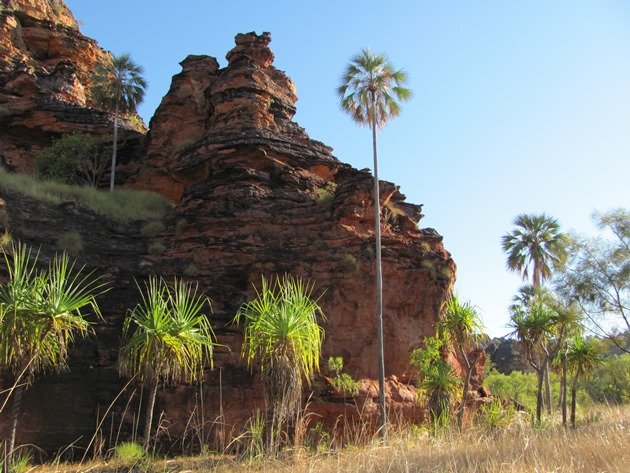
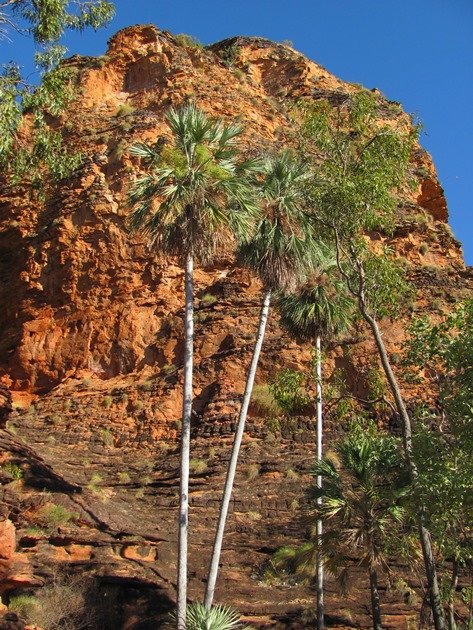
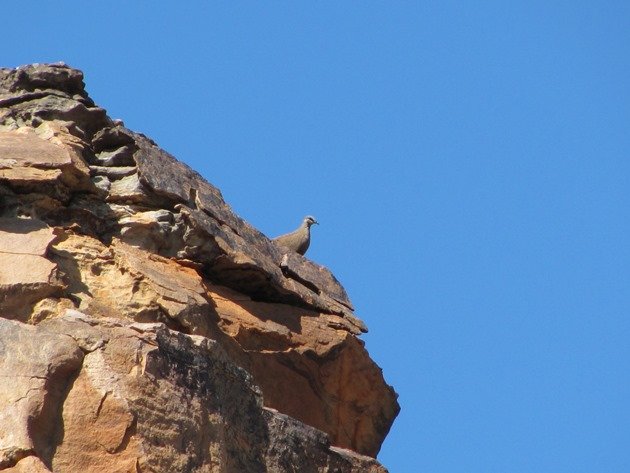
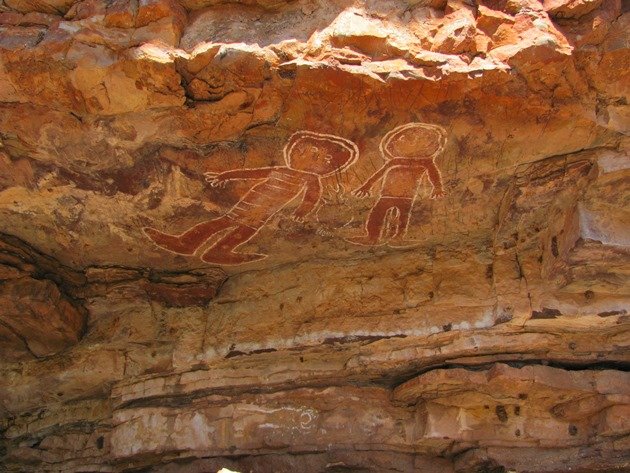
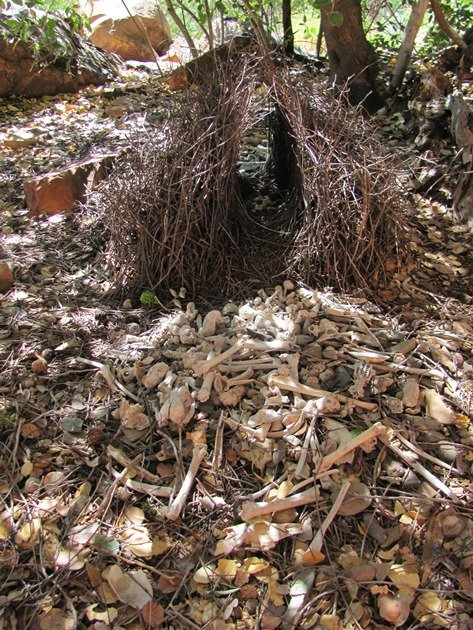











What extraordinary birds! The Red-tailed Black Cockatoos and Blue-winged Kookaburra are amazing, and so is the bower of the Great Bowerbird (with a bone collection, too) …wow! I also loved seeing the Aboriginal paintings. Thanks for a great post!
I did my bike Tour along that highway back in 02005. One encounters few people along the way, for sure, but every one of them assumes that you aren’t carrying enough water (wrong,) and it can get a little overwhelming. Ha ha ha. Oranges would always have been appreciated, however. 🙂
The heat at the time (not to mention the flies) made it very hard to stop and look for birds, as I remember. Nice post Clare, in 6 months in the country I don’t think I got even one good photo of any type of black cockatoo, despite seeing them all over the place.
Thanks, Wendy!
Michael…you had an adventure and a half! Well done for taking it on! 🙂
Wow, a billiabong is actually a real thing? I thought it was just a clothing company with a funny name. (Glad to see, along similar lines, a pic of a real-life Kookaburra.)
I love learning new things from your posts, Clare! And with your wonderful photos of so many bright and interesting birds, Australia is definitely on my bucket list.
It’s certainly a great spot to visit. Your post brought back happy memories.